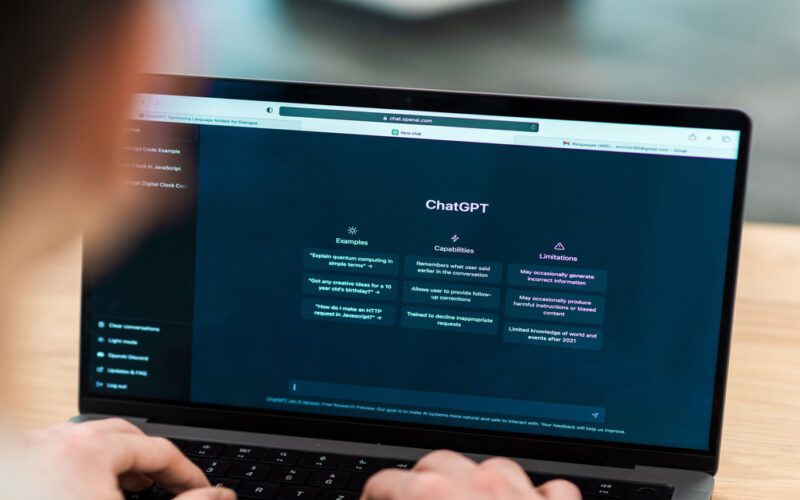Summary: This blog compares Ruby and Python, highlighting Python’s dominance in Data Science due to extensive libraries and community support. While Ruby excels in web development, Python’s versatility and AI and Machine Learning applications make it a top choice for aspiring tech professionals.
Introduction
Programming languages play a significant role and are more widely applicable in web application development. The options for the best programming languages for developers were narrowed down to Ruby and Python.
Their universal application and ease of learning make these programming languages the best assistants for any programmer or developer. However, there is a constant tiff over whether Ruby is better than Python or vice versa.
Both these programming languages find applications in web application development. Still, when it comes to use cases, Python takes the lead. In this blog, we will explore the difference between Ruby and Python and why enrolling in the online Python course for Data Science will make it easy for you to comprehend Data Science and related concepts.
Overview of Ruby And Python
Understanding the critical differences between Ruby and Python is essential for developers to decide which language best suits their project needs. Each language has unique strengths and uses cases, influencing development speed, performance, and community support. Before understanding the difference between Ruby and Python, one must get a brief overview of both programming languages.
Ruby Overview
Ruby, often called Ruby on Rails, is a highly favoured language among developers for creating web applications due to its robust framework and simplicity. Built on the MVC (Model-View-Controller) architecture, Ruby offers a structured approach to application development.
The language comes with a wealth of in-built functions and libraries, streamlining the coding process and making it more efficient. This powerful combination of features makes Ruby an excellent choice for developers. Notable websites such as Shopify, GitHub, and Airbnb leverage Ruby for their platforms, showcasing its reliability and capability in handling complex web applications.
The Pros And Cons Of Ruby Programming Language
Understanding the pros and cons of the Ruby programming language helps developers make informed decisions. Ruby is known for its simplicity and productivity. However, it can have several limitations compared to other languages. Awareness ensures the best fit for project needs.
Python Overview
Regarding one of the leading programming languages, Python takes the lead. It is one of the most preferred programming languages by Data Scientists and comes equipped with an extensive set of statistical libraries that are helpful in Data Science.
Hence, if you plan to pursue a Data Science certification course, opting for an online Python course will be the best move forward. The different types of Python frameworks are helpful for a Data Scientist in assessing and interpreting the data.
In addition, Python is easy to learn and has universal applications. Its use cases are not just limited to Data Science but include other fields like Artificial Intelligence and Machine Learning. It is an open-source programming language. You can join the best Python course for Data Scientists and develop your skills in Python programming.
Also Read:
Data Abstraction and Encapsulation in Python Explained.
Introduction to Model validation in Python.
The Pros And Cons Of Python Programming Language
Understanding the pros and cons of Python programming is essential for making informed decisions in software development. It helps leverage Python’s strengths while being aware of its limitations. You will find the pros and cons of Python in the table given below:
Understanding The Difference Between Ruby And Python
Understanding the difference between Ruby and Python is essential for making informed decisions in software development. Each language offers unique features and benefits, influencing factors like ease of learning, community support, performance, and use cases. Knowing their distinctions helps choose the right tool for specific project needs.
Are There Any Similarities Between Python And Ruby?
Understanding the similarities between Python and Ruby can enhance a developer’s versatility. It will also improve problem-solving skills and facilitate code migration. Knowledge of both languages can broaden career opportunities and foster a deeper grasp of programming concepts. Similarities between Python and Ruby are listed below:
Cross-Platform Compatibility
Python and Ruby are cross-platform languages, meaning they can run on various operating systems, such as Windows, UNIX, Linux, and macOS, without needing modifications.
This flexibility allows developers to write and execute code on one platform on another, providing a versatile development environment.
High-Level Languages
Python and Ruby are high-level languages, which means they provide a level of abstraction closer to human language than machine language.
This abstraction makes them easier to read, write, and maintain, reducing the complexity of programming in lower-level languages.
Interpreted, Not Compiled
Unlike languages that require compilation into machine code, Python and Ruby are typically interpreted at runtime.
This contributes to their dynamic nature, allowing for rapid development and testing since changes can be tested immediately without a separate compilation step.
Dynamic Typing
Both Python and Ruby support dynamic typing, where the type of a variable is determined at runtime rather than in advance.
This flexibility allows for more adaptable code and speed up the development process, as developers do not need to declare variable types explicitly.
Object-Oriented Programming (OOP)
Python and Ruby are rooted in object-oriented programming, focusing on objects and classes.
OOP promotes code reusability and modularity, helping developers create well-organised and maintainable codebases. This approach is particularly beneficial for managing complex software projects.
Extensive Standard Libraries
Both languages have extensive standard libraries that provide pre-written code for everyday tasks, such as file handling, networking, and data manipulation.
These libraries can significantly speed up development time by allowing developers to leverage existing solutions rather than writing code from scratch.
Consistent Support and Updates
Python and Ruby enjoy active communities and continuous support, ensuring they remain up-to-date with the latest technological advancements and security practices.
Regular updates and a wealth of resources, including documentation and community forums, make it easier for developers to find support and stay current with best practices.
Python Or Ruby: Which One Is The Best Choice For The Freshers?
Since Python is gaining popularity as a programming language, freshers are now opting for online Python courses for Data Science. It is a leading programming language and can help freshers comprehend Data Science concepts more effectively.
Choosing the right Python course can be daunting if you’re a fresher eager to dive into Data Science. With numerous course providers, it’s easy to feel overwhelmed. However, while Python is easy to learn, certain complexities require expert guidance. That’s why joining an online Python course for Data Science can provide the best support and assistance on your learning journey.
Freshers can pick up Python programming language courses. Still, one must begin with Ruby because it is one of the best tools for developing web applications. Once you have gained expertise in this, you can start learning Python.
Let’s delve into the practical side of things. Both Ruby and Python have their unique significance in the world of programming. However, Python’s wide range of applications and opportunities make it a clear winner. Just look at the success stories of Instagram and YouTube, both powered by Python. If you’re aspiring to be a Data Scientist, embarking on an online Python course for Data Science could be your best career move.
With Python, it becomes easier to understand the different Data Analysis and interpretation tasks. Besides, the availability of libraries and many Python frameworks gives the developer enough opportunity to develop applications quickly.
Choosing The Best Python Certifications
Knowing how to choose the best Python certifications is crucial for career advancement in tech. Certifications validate skills, boost employability, and enhance credibility among peers and employers. They demonstrate proficiency in Python, web development, and Machine Learning, opening doors to lucrative opportunities.
If you plan to enrol in a Data Science certification or Python programming course, here are key parameters you must consider before deciding.
Check the course module
The first thing you need to check is the course module of the course provider. The learning platform should incorporate Python’s theoretical concepts and practical applications.
Instructors
The next significant factor is the instructors taking the course ahead. A team of professionals will ensure a positive learning experience.
Frequently Asked Questions
What Are The Key Differences Between Ruby And Python For Data Science?
Ruby is favoured for web app development due to its robust framework (Ruby on Rails) and simplicity. In contrast, Python is preferred in Data Science for its extensive libraries, such as NumPy and Pandas, which are essential for Data Analysis, manipulation, and Machine Learning model building.
Why Is Python Preferred Over Ruby For Data Science Careers?
Python’s appeal for Data Science lies in its rich ecosystem of libraries like TensorFlow and scikit-learn, which are crucial for AI and Machine Learning. Its syntax is straightforward, making it easier to learn, and it enjoys broad community support, ensuring continuous updates and advancements essential for staying current in the field.
How Can Beginners Choose Between Learning Ruby Or Python For Programming?
Beginners should choose Ruby for web development, leveraging its robust framework, Ruby on Rails. Python offers superior opportunities for broader tech applications encompassing Data Science, AI, and Machine Learning. Its versatility and extensive libraries like TensorFlow and pandas cater to diverse industry needs, making it a preferred starting point.
Wrapping It Up
When choosing a programming language, one can begin with Ruby or Python. However, regarding popularity, Python seems to take the lead. It finds more comprehensive applications and has some of the most popular websites like Instagram, Facebook, and YouTube on its list.
Pickl offers the best learning experience. Suppose you, too, plan to become a Data Scientist and explore the best learning opportunity. In that case, this is the best time to start enrolling on the online Python program course for Data Science.
Here, you get to learn from a Data Science expert. Each course module is followed by project and case studies that help better understand and apply Data Science and Python.
The data will be driving the world, and rolling for the best Data Science program will help you keep up with the competitive change taking place in the market. Making the right career choices is paramount. Hence, learning this skill set will be more beneficial.
Enrol for the Data Science certification program and Python program today. Pickl.AI provides the best online Data Science certification course that covers the topic of Python as well. You can join this course and start your learning journey.







